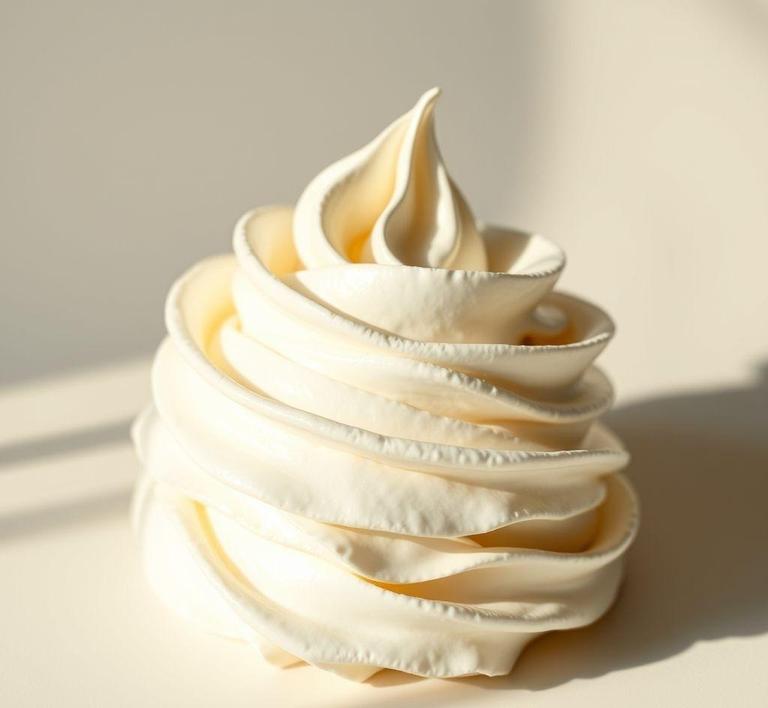If you’ve ever found yourself with a tub of whipped topping that you didn’t use all of, you might be wondering if it’s safe to refreeze it. The good news is, yes, you can refreeze whipped topping, but it requires a little extra care. Whipped topping is usually made from dairy and stabilizers that can separate or become grainy when frozen and thawed multiple times. In this guide, we’ll dive into how to properly refreeze whipped topping without sacrificing its texture and taste, plus some handy tips on how to avoid any mishaps so that you can enjoy your creamy topping whenever you need it.
Can You Refreeze Whipped Topping?

Whipped topping, whether it’s the kind found in a tub in your grocery store or freshly made at home, is a beloved ingredient in many desserts, from pies to cakes to sundaes. The question of whether you can refreeze whipped topping may arise when you find yourself with leftovers after an event or baking session. In short, yes, you can refreeze whipped topping, but there are some important considerations to keep in mind before doing so.
Whipped topping is essentially a mixture of cream or non-dairy ingredients whipped with air and sweeteners to form a light, airy texture. This gives it its signature fluffiness, but also makes it more sensitive to temperature changes compared to more solidified foods. Freezing and refreezing whipped topping changes its structure, which can have varying effects on both its texture and taste.
The main issue with refreezing whipped topping lies in the breakdown of its delicate air bubbles, which gives it that light, airy consistency. When whipped topping is frozen, the water in it turns into ice crystals. Upon thawing, these crystals melt and can cause the topping to lose its smoothness. If you then refreeze it, these ice crystals grow larger, further destabilizing the whipped texture and leading to a more watery, clumpy consistency. So, while it is technically possible to refreeze whipped topping, it is not always advisable unless necessary.
How To Refreeze Whipped Topping?
If you’ve decided to go ahead and refreeze your whipped topping, there are a few steps to follow to ensure the best possible outcome. The process can minimize some of the negative impacts freezing has on the texture, though perfection is never guaranteed.
- Store It Properly: After you’ve thawed your whipped topping, it’s essential to store it in an airtight container if you’re planning to refreeze it. This prevents it from absorbing any unwanted odors from the freezer and helps maintain its flavor. Make sure the container is sealed tightly to prevent any moisture from entering, which can cause freezer burn.
- Thawing: Before refreezing, you should first let the whipped topping thaw completely. The best way to do this is by leaving it in the refrigerator overnight. Avoid thawing it at room temperature, as this can lead to the rapid breakdown of its structure, making it even harder to work with once refrozen.
- Re-whip: Once thawed, you may want to whip the topping again lightly. This helps redistribute the air and smooth out any lumps or separation caused by freezing. However, keep in mind that over-whipping may lead to a less desirable texture. The goal is to just restore some of the fluffiness it lost during the freezing process.
- Refreezing: After re-whipping, you can place it back into the airtight container and refreeze it. The key is to freeze it quickly, at the lowest possible temperature, to prevent the formation of large ice crystals. Keep in mind that refreezing whipped topping multiple times should be avoided, as the quality will degrade further with each cycle.
- Usage: After the whipped topping is refrozen, it’s best to use it for cooking or baking purposes rather than as a topping for fresh desserts. Its texture may not be as smooth and airy as when it was first whipped, but it should still be perfectly fine for incorporation into recipes like frostings, fillings, or baked goods.
Quality Impact
Refreezing whipped topping can have a significant impact on its quality, primarily due to changes in texture. When you freeze whipped topping, the water content within the mixture forms ice crystals, which disrupt the delicate balance of air and fat that gives the topping its signature light, fluffy texture. Upon thawing, the ice crystals melt, causing the topping to lose some of its volume, turning it into a more watery, less airy substance.
In addition to changes in texture, refreezing can also affect the flavor. As whipped topping thaws and refreezes, some of its flavor components, especially the sweetness, may degrade. Non-dairy whipped toppings, which are often made with hydrogenated oils and other stabilizers, may have a longer shelf life and be more resistant to flavor degradation compared to their dairy-based counterparts, but they’re still not immune to the changes that occur from freezing and refreezing.
Visually, you might also notice a slight change. The topping could appear slightly more translucent or may have a grainy or lumpy texture upon thawing, especially after multiple freezes. These physical changes are due to the separation of water from the other ingredients in the whipped topping.
While the refrozen whipped topping is still usable in most cases, its quality will inevitably be compromised when compared to fresh whipped topping. Therefore, it’s essential to only refreeze whipped topping once and use it in situations where texture is less of a concern-like in cooking or baking-rather than on top of desserts where its airy texture is meant to shine.
While you can technically refreeze whipped topping, it is not the ideal way to preserve its quality. The structure of whipped topping-composed of air, water, and fat-does not hold up well under repeated freezing and thawing cycles, leading to textural changes like separation, wateriness, and a loss of fluffiness. If you find yourself needing to refreeze whipped topping, following the right steps can help maintain its integrity, but the resulting product may not be as pleasing as the original.
If you regularly have leftovers, consider portioning out the topping before you first freeze it so that you don’t need to deal with thawing and refreezing. Alternatively, use whipped topping in recipes where slight changes in texture won’t be as noticeable. When it comes to maintaining the quality of whipped topping, the best advice is to use it within a reasonable time after initial thawing to enjoy it at its best-light, fluffy, and perfectly sweet!
Is It Safe To Refreeze Whipped Topping?
Refreezing whipped topping is a topic that often brings up mixed opinions, and for good reason. Whipped topping, whether it’s a dairy-based product like Cool Whip or a non-dairy alternative, has a unique texture and composition that makes it more delicate than other frozen foods. While it is technically possible to refreeze whipped topping, whether or not it is safe depends on a variety of factors.
When whipped topping is initially frozen, it becomes light and airy, with a smooth texture that is perfect for adding to desserts or serving as a topping. However, when it thaws, it loses much of that structure, becoming runny or separating. This is due to the way the fat and water in the topping interact, and it often results in a compromised texture. So, if you’re considering refreezing it, it’s important to keep in mind that it may not retain the same qualities once thawed again.
If you do decide to refreeze whipped topping, safety becomes a critical concern. The biggest risk comes from potential bacterial growth during the thawing and refreezing process. Whipped topping is a perishable food, and once it starts to thaw, the temperature change creates an ideal environment for bacteria to multiply, especially if it has been left out too long. Therefore, it is essential to ensure that the topping has been properly stored and hasn’t been left at room temperature for extended periods.
In conclusion, while it is generally safe to refreeze whipped topping if handled correctly, it is not always recommended if you want to maintain its ideal texture and consistency. Always take proper precautions, such as ensuring the topping is kept at safe temperatures, and keep in mind that the product may not be as visually or texturally appealing after multiple cycles of freezing and thawing.
Signs That Whipped Topping Should Not Be Refrozen
Refreezing whipped topping is not always a good idea, and certain signs can indicate whether it should not be refrozen, even if it’s technically still safe. Some of the most common indicators that your whipped topping is no longer suitable for refreezing include:
- Separation of Liquid: One of the most telling signs that whipped topping should not be refrozen is if you notice that it has separated into water and solid components. The liquid phase will often be clear and may separate from the whipped cream, making the topping look less like its original, airy state. This separation means that the emulsion has broken down, and the texture will likely worsen with further freezing.
- Off Smell: If the whipped topping starts to emit an off, sour, or rancid odor, it’s no longer safe to eat, let alone refreeze. This smell indicates that the fats or dairy in the whipped topping have begun to spoil, a sign that bacterial growth may have occurred during thawing. If you catch this sign early, discard the product immediately.
- Change in Color: Whipped topping typically has a creamy white or pale color. If the topping begins to show discoloration-like yellowing, brown spots, or any other unusual hues-this could indicate the degradation of the product, making it unsafe to refreeze.
- Unusual Texture: Whipped topping is known for its light, fluffy texture. However, after thawing, it may lose its airy consistency and become lumpy, watery, or too soft. If you notice a strange, sticky texture that cannot be whipped back into shape or if it appears gritty, this is a clear sign that it should not be refrozen.
- Storage Issues: If whipped topping has been stored improperly during thawing, such as being left out too long or exposed to fluctuating temperatures, it’s best to discard it rather than attempt to refreeze. Leaving it at room temperature for over two hours can create conditions where bacteria can thrive, making it unsafe to consume.
Common Refreezing Mistakes
When it comes to refreezing whipped topping, there are a few common mistakes that people tend to make. These mistakes can not only affect the safety of the product but also compromise its texture and taste:
- Not Thawing Properly: A common mistake is to either thaw whipped topping too quickly or not thoroughly. Thawing at room temperature or in the microwave can cause uneven melting, leading to the breakdown of the whipped topping’s structure. Instead, it should be thawed slowly in the refrigerator to maintain its consistency and ensure it doesn’t become watery or slimy.
- Leaving It Out Too Long: If whipped topping has been left out at room temperature for too long before refreezing, it can become a breeding ground for bacteria. The USDA advises not to leave perishable foods, including whipped topping, at room temperature for longer than two hours. The longer it sits, the higher the risk of spoilage, which makes refreezing a bad idea in these cases.
- Not Using an Airtight Container: Whipped topping should always be stored in an airtight container to prevent freezer burn and to maintain its quality during storage. If the topping is not sealed properly before being placed in the freezer, it will lose its texture and flavor. This mistake can also lead to contamination from other foods in the freezer.
- Refreezing Multiple Times: Each time whipped topping is thawed and refrozen, it loses more of its texture and may become more prone to bacterial growth. The more times it goes through this cycle, the worse the final result will be. For the best taste and safety, limit the number of times the topping is frozen and thawed.
- Not Considering the Type of Whipped Topping: Dairy-based whipped toppings (like those containing milk, cream, or butterfat) generally do not refreeze as well as their non-dairy counterparts. Dairy-based options tend to separate more easily, while non-dairy versions can sometimes maintain a more stable texture. Always check the specific type of topping you are working with to gauge whether refreezing is feasible.
Tips And Tricks
To help you get the most out of your whipped topping and ensure that refreezing doesn’t negatively affect it, here are a few useful tips:
- Portion It Out: If you have leftover whipped topping, consider portioning it into smaller amounts before freezing. This allows you to thaw only what you need and avoid refreezing multiple times.
- Stabilize the Texture: Some brands of whipped topping offer “stabilized” versions that are formulated to hold up better when frozen and thawed. If you plan to freeze whipped topping, choosing one of these options can help maintain its texture and quality.
- Use Immediately After Thawing: After thawing, use the whipped topping as soon as possible for the best results. If you are unsure whether it will be used quickly, it might be better to freeze it in small portions so you can thaw only what you need at a time.
- Try Freezing in Recipes: Instead of refreezing whipped topping by itself, consider incorporating it into desserts before freezing. Whipped topping can make a great ingredient in no-bake pies, ice creams, or layered desserts, which can be safely frozen once combined with other ingredients.
- Freeze in an Ice Cube Tray: If you want to freeze whipped topping for small uses (like adding to coffee or baking), freezing individual cubes in an ice cube tray is an excellent option. This way, you can grab just the right amount, minimizing the need to thaw and refreeze the entire batch.
Conclusion
Refreezing whipped topping is a convenient option when you have leftover product, but it comes with certain risks and challenges. While it can be done safely in some cases, the loss of texture and the potential for bacterial growth should not be underestimated. The key to maintaining safety and quality lies in proper storage, thawing, and avoiding multiple freezing cycles.
By being aware of the signs that indicate your whipped topping is no longer good to refreeze, avoiding common mistakes, and following helpful tips, you can extend the shelf life of your whipped topping without compromising your recipes. However, the best rule of thumb is to use whipped topping as fresh as possible and to store any leftovers in a way that minimizes the need for refreezing.


